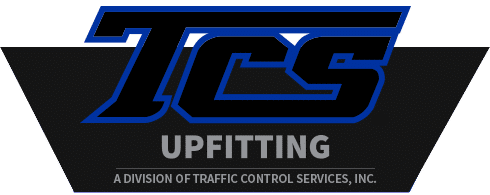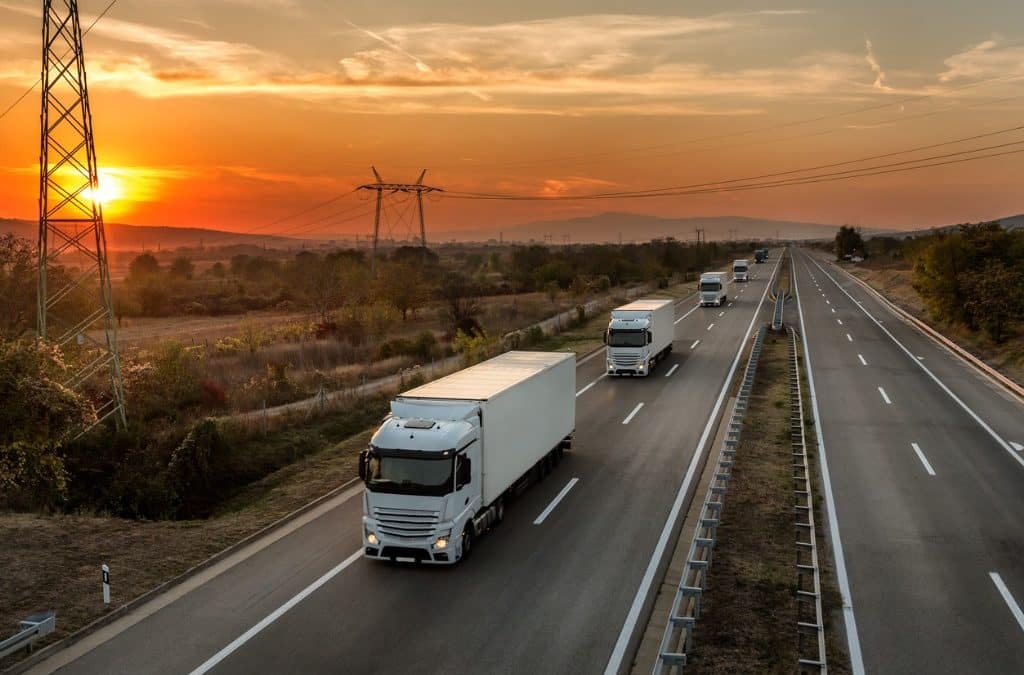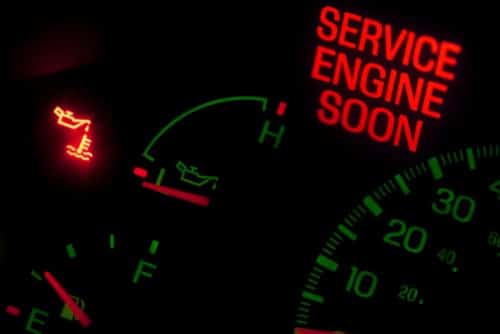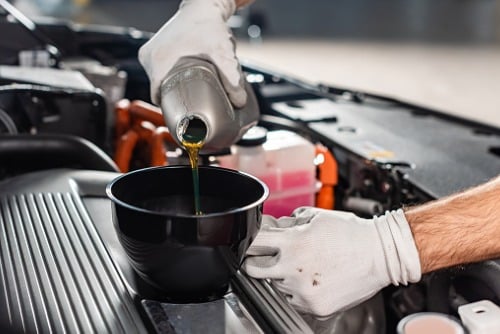When it comes to commercial vehicles, the importance of preventative maintenance programs cannot be overstated. For operations to run smoothly and efficiently, all vehicles and trucks need to be properly maintained. This is why TCS Upfitting has created this commercial vehicle maintenance checklist to keep your fleet in working order.
What Classifies as a Commercial Vehicle?
A commercial vehicle is any vehicle that is used for business purposes. The most common commercial vehicles are fleet vehicles (i.e. eighteen-wheelers/delivery trucks).
In the United States, nearly nine million people have trucking-related jobs. Commercial trucks as a whole travel more than 400 billion miles each year and account for over 70% of the merchandise that is shipped across the United States.
The millions of trucks that are out on the roads each day are pivotal to the American economy. It is vital that these vehicles are kept in working order by being properly maintained. Not only to keep their cargo safe but to keep the drivers and the people around them safe too.
What Should Commercial Vehicle Drivers Check Before Hitting the Road?
It’s better to be safe than sorry. All commercial vehicle and truck drivers should inspect the following areas of their vehicles before they get to work. These routine checks are recommended by the Federal Motor Carrier Safety Administration (FMCSA).
Tires
According to the FMCSA, tire maintenance accounts for more than a third of the total maintenance costs for commercial vehicles. Thus, it is important that drivers check their tires’ air pressure and treads for any issues. These are simple checks that, if done consistently, can save lots of money down the road.
Fluids
Failure to check the essential fluids in your commercial vehicle can lead to serious problems in the future. The coolant, antifreeze, oil, and fuel should all be checked before each trip to make sure their levels are ideal and that there are no leaks.
Additionally, drivers should check underneath the vehicle and look for dripping or stains on the ground. You should also turn on your ignition and inspect the oil pressure, temperature, and air pressure gauges to make sure nothing is amiss.
Electrical System and Wiring
The following lights should be checked to make sure that they don’t need to be replaced and there are no issues with the wiring.
- Headlights
- Warning lights
- Flashers
- Clearance lights
- Turn signals
- Brake lights
Brakes
Both the parking and standard brake systems should be checked before heading out. Check the amount of lining left, make sure the air pressure system is working, and make sure the parking brake turns on automatically.
Recommended Read What Is Vehicle Upfitting?
Preventative Maintenance Checklist
Preventative maintenance (PM) includes any scheduled services or regular maintenance jobs that are performed in order to keep a vehicle in working order. The goal of PM is to anticipate issues before they occur and plan how issues should be addressed if they become more serious.
Some types of preventative maintenance depend on the type of vehicle that is being serviced, but there are also several routine maintenance services that ring true across the board.
The following maintenance items should be scheduled and performed regularly to keep your vehicles running and in good condition.
- Changing the oil
- Changing the filter
- Tightening components
- Tuning the engine
- Fixing the alignment
- Fixing the brakes
- Rotating the tires
- Lubricating the engine
- Fixing the radiator
Demand Maintenance Checklist
Demand maintenance (DM) is the exact opposite of preventative maintenance. DM is performed when a specific part of a vehicle breaks down or is malfunctioning. DM is also performed after internal servicing and inspection teams deem that there is excessive wear and tear to the vehicle. Make sure to schedule maintenance as soon as you notice there is an issue.
Demand maintenance items typically include the replacement of the following parts.
- Light bulbs
- Springs
- Windshields and windows
- Seat cushions
- Batteries
- Engine and transmission
- Worn or corroded parts
As you can see, most forms of DM are fairly minor, like replacing light bulbs, but others, like replacing the engine and transmission, are far more serious.
Crisis Maintenance Checklist
A crisis maintenance checklist covers emergency services that are required due to failure to perform preventative and demand maintenance. Crisis maintenance is performed when critical systems of a commercial vehicle fail or the vehicle breaks down while on the road.
Businesses should try to avoid crisis maintenance at all costs, which is why it is important to perform regular checks and inspections to keep vehicles properly maintained.
Crisis maintenance can lead to other expenses and issues like unplanned downtime, replacement of parts, hiring of an outside mechanic, and the rerouting of deliveries.
Visit TCS Upfitting to Upgrade Your Commercial Vehicles!
Maintaining a fleet of commercial vehicles is no easy task, and making sure that each and every truck receives the maintenance it needs can be daunting. That is why it is important to hire experienced drivers who will take the time to inspect their vehicles and have them repaired.
At TCS Upfitting, we are the best vehicle upfitter in the state of Kansas. We specialize in upgrading both commercial and emergency vehicles. Our upgrades ensure that these vehicles can perform their duties to the best of their ability.
Take a look at all the different ways we can upfit commercial vehicles!




